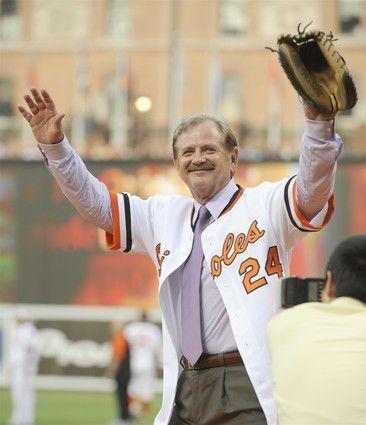
Cal Ripken Jr. had grown up with Memorial Stadium. He watched Brooks Robinson lead the Orioles to a pair of World Series championships, falling in love with the sport and team for which he’d one day become a Hall of Famer.
So when Ripken strode to the plate in the ninth inning Oct. 6, 1991, he hoped to send that beloved stadium out with a bang, something worthy of all the memories fostered there before the Orioles would bid adieu and travel downtown to a new ballpark of unknowns.
Instead, Ripken dribbled a game-ending double-play ball to third base.
“Not the way you want to go out at Memorial Stadium,” Ripken said.
But what waited for Ripken and all of Baltimore at Oriole Park at Camden Yards soon washed away the trepidation of leaving a venue of 38 years. Ripken was against the move until he walked into Camden Yards for the first time, looking around at the warehouse and downtown skyline. An understanding took place: Change could be good.
And Camden Yards, certainly, was good.
“It felt like baseball had already been played there,” Ripken said. “It felt like it had this old-park feeling, and I think the warehouse really did that, but it was brand-spanking new. And you quickly forgot about Memorial Stadium.”
It’s hard for Ripken to believe 30 years have passed since Camden Yards first opened — just as it’s hard to believe he stopped playing baseball there two decades ago. But even as he enters the stadium in recent years, the charm of the grounds remains.
Rick Dempsey, a former catcher in the Orioles Hall of Fame, noticed that charm before the ballpark was even completed. With a hard hat on, Dempsey made his way down to what would be the field level during the early stages of construction. And as his guide described the efforts and what would be built around him, the image took shape in Dempsey’s mind.
If he has one regret from a 24-year major league career, it’s that he didn’t get a chance to play at Camden Yards more. He returned to Baltimore as a 42-year-old, earning one more go-around because of his defensive prowess.
But he only started one game at Camden Yards — part of eight appearances before he retired. And yet, one game was all he needed to know how special it was.
“Every day you get into that stadium, it’s so comfortable,” Dempsey said. “It’s what Major League Baseball should be at every ballpark. I know Fenway has its charm. Yankee Stadium has its charm. But not many ballparks even come close to what Camden Yards had from the very beginning, and the only thing lacking there right now is a championship team. Otherwise, that would be the place to come and see baseball games.”
The early success at Camden Yards, with teams led by Ripken, helped settle a fan base quickly to new confines. Ripken spent half his career at Memorial Stadium and the second part at Camden Yards, and he has fond memories in each — particularly the 1983 World Series championship.
But perhaps no moment eclipses Sept. 6, 1995, or the weeks leading up to it. With each consecutive game played unfurled on the warehouse as Ripken approached the MLB-record 2,131 games, Ripken could feel the excitement mount.
Unlike his final at-bat at Memorial Stadium, though, when he let the moment get too large and he grounded into a double play, Ripken embraced the spotlight. He homered in games 2,129, 2,130 and 2,131, then took a lap around Camden Yards during a 22-minute standing ovation for his Iron Man record.
“Bobby [Bonilla] and [Rafael Palmeiro] pushed me down that line to take that lap. Reluctantly so at first, I was thinking, maybe this will help,” Ripken said. “And my view all along was I’ll celebrate as long as you want afterward, but pitchers are cooling down. You can’t stop the action in the middle — it’s like a long rain delay.
“After I started that lap and started running around, I forgot those thoughts. I was thinking, ‘To heck with starting the game again. This is too good.’”
Years earlier, Ripken worried the move away from Memorial Stadium would fade the memories he had from that stadium. But he quickly learned that memories aren’t rooted in a place — instead, they’re rooted in his mind.
The move to Camden Yards only spurred more memories, adding to a Rolodex of fond moments from a standout career. They’re different, Camden Yards and Memorial Stadium. But 30 years later, Camden Yards is still among the crown jewels of MLB, an intimate ballpark that will never leave Ripken’s psyche.
“It’s a magical ballpark,” he said. “And I can’t believe it has been 30 years.”
()
